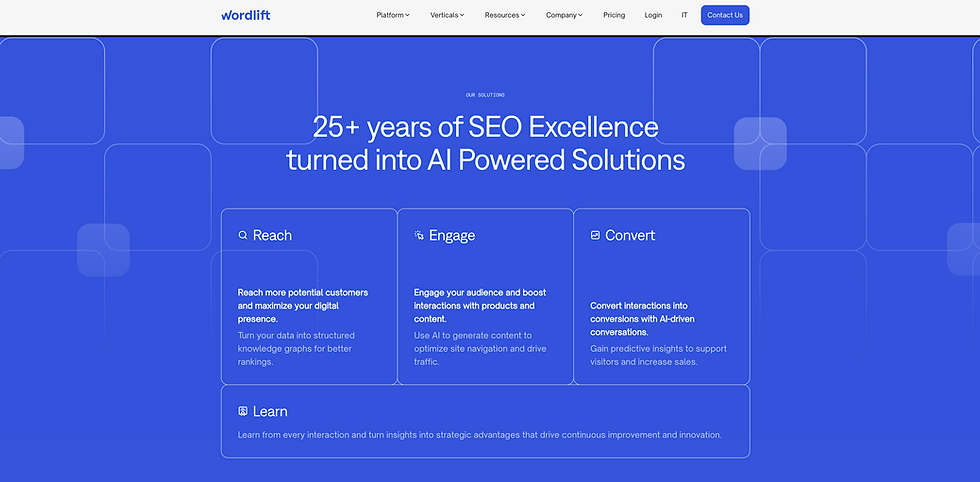Why AI Products Struggle, And How Strategic Positioning Can Save Them
- Claudia Crangasu
- Jul 11
- 3 min read

Most AI products don’t fail because of poor tech, they fail because users don’t understand why they matter. As AI capabilities evolve rapidly, positioning becomes not just important, but essential. If your users, clients, or stakeholders can’t articulate the value of your AI product, it’s already at risk.
The Common Mistake: Over-Focusing on Technical Brilliance
Many teams highlight model accuracy or automation.
But positioning isn’t about tech specs, it’s about perceived value.
The explosion of AI-powered tools has shifted the focus from “what it does” to “why it matters.” As a marketing leader, my role has evolved: it’s no longer just about defining product features, but about articulating purpose, driving adoption, and proving strategic value.
AI Expertise and Framework
To prepare for this transformation, I completed the Artificial Intelligence Programme at the University of Oxford. The curriculum went beyond technology; it was about applying AI strategically. I learned how to assess industry impact, develop use cases, understand model training, and embed ethical principles into organisational design. One concept that deeply resonated with me was the CENTAUR framework, a model that promotes synergy between humans and machines, preserving human creativity while optimising workflows with AI.
This philosophy now underpins my approach to AI product positioning: don’t replace the human, enable them to do their best, most strategic work.
The Centaur Framework: Human + Machine Positioning
Positioning should reflect synergy between human expertise and AI power.
Think of your product not as a replacement, but as an enabler.
Strategy to Execution
At WordLift, where I currently serve as Fractional CMO, I lead initiatives that amplify market presence, enhance revenue growth, and align marketing with business objectives.
My expertise in AI value prop design helped reposition WordLift as an innovator and the go to platform for AI-powered SEO Solutions to enterprises businesses. As part of the positioning I have introduced 3 key elements:
The Exponential Value Flywheel - as the model is trained and learns, what other value streams can it unlock. DATA - CONTENT - KNOWLEDGE
The Human Expertise - that accompanies the model to check outputs, and reinforce its learning
The Safety guardrails - the security protocols that the model has to follow
At Hurree , the AI-powered reporting platform that consolidates data into a command centre for fast, smart decision-making, I transformed their operational model by identifying new customer segments to achieve product-market fit, applying the same principles:
We tailored AI-powered reporting tools to each stakeholder based on their role, goals, and KPIs.
We positioned the product not around what it automated, but how it empowered teams to identify growth opportunities faster.
We then built customised onboarding flows to ensure adoption was seamless and intuitive.
The result? Stronger alignment between product promise and user reality, what Jason Hauer aptly describes as:
“You don’t need more AI. You need more alignment. Define the use case. Describe what great looks like. Commit to iteration. Then any tool becomes powerful.” (Source)
Why Positioning Matters More Than Ever
Too many AI products still lead with tech, not impact. But in a crowded space, your differentiator is no longer just “what the product does.” It's:
What pain it solves
How it improves outcomes
What people can do with the time, insights, and clarity it unlocks
In marketing AI, the goal is not to impress with automation, but to inspire confidence that your solution empowers people to perform at their best.
What's next?
As I continue to evolve the market adoption of my clients' AI products, I’m also focused on orchestrating an AI-powered experience for my Marketing teams. Using the CENTAUR framework, I’m designing a strategy where every AI tool is aligned to business outcomes, customer experience, and team workflows.
Because in the end, AI isn’t the destination, it’s the amplifier. And marketers have a responsibility to shape how it's communicated, adopted, and valued.
About me:
In 2024 I completed the Artificial Intelligence programme at the University of Oxford to deepen my expertise in applying AI strategically within modern businesses, gaining practical insight into how AI can solve business challenges, and examined the role of AI in reshaping workplace operations using the CENTAUR (human + machine) model.
My training focuses on identifying high-impact AI opportunities, building business cases for adoption, developing use cases, and integrating ethical principles like transparency, diversity, and user control into AI applications. I use this expertise to shape AI product positioning, helping businesses unlock value through smart, human-centered technology.
My work focused on e-commerce applications, including automating merchandising, enhancing catalog discovery, and balancing AI efficiency with high-touch luxury service. I also developed ethical guidelines promoting diversity, transparency, user control, and social responsibility.





Comments